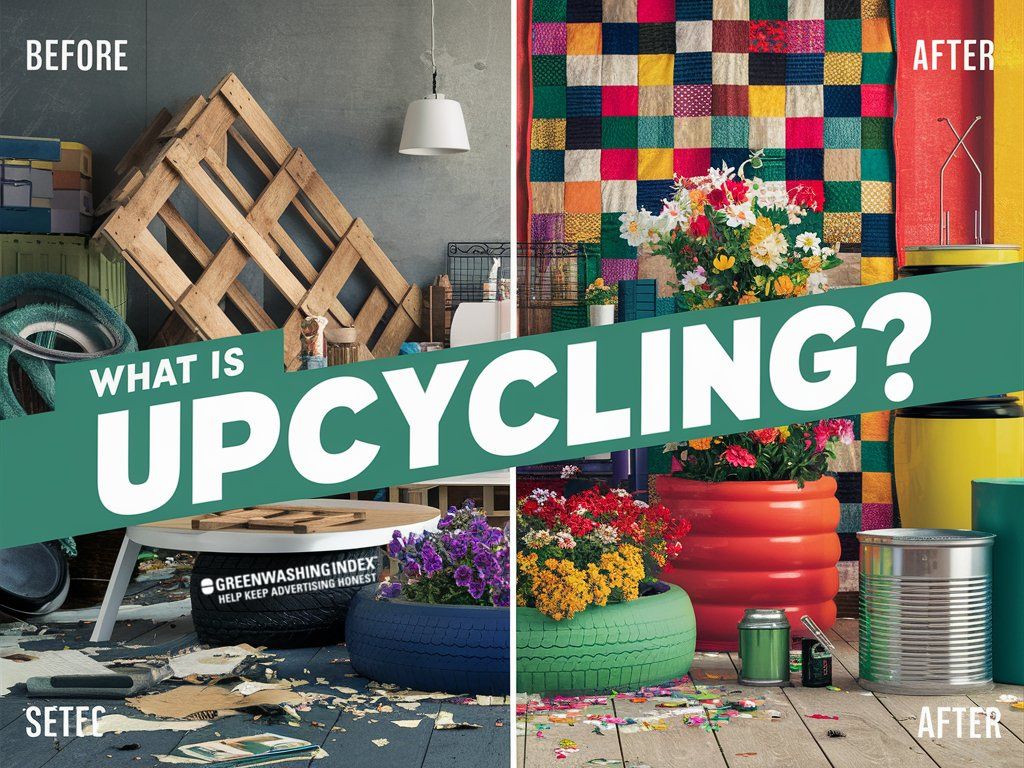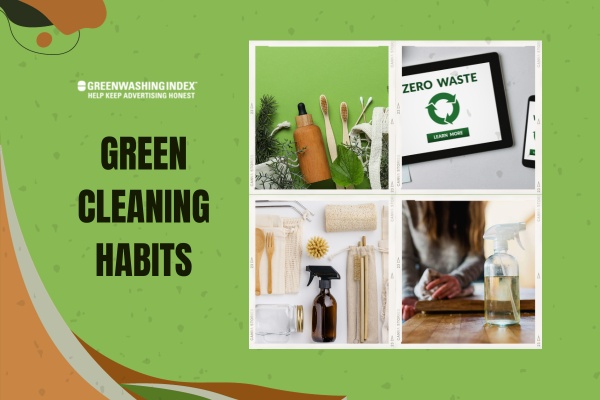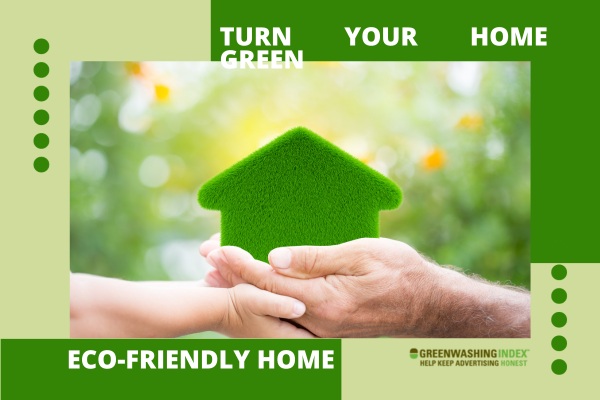Let’s talk about upcycling, a trend that’s more than just a buzzword—it’s a way to creatively transform waste into something valuable. By reimagining discarded items, we’re not only reducing landfill waste but also fostering innovation and sustainability in everyday life. Picture turning an old ladder into a chic bookshelf or repurposing fabric scraps into fashionable accessories.
The potential is limitless, and it’s a practice that benefits both the environment and our sense of creativity. Curious about how upcycling stacks up against recycling or how to get started? There’s a lot more to explore.
What is Upcycling?
Upcycling is the creative transformation of materials that would otherwise go to waste, turning them into something new and useful. We can see this in fashion, where old clothes are redesigned, in furniture, where discarded items are refurbished, and in industry, where scrap materials are repurposed.
Creative Transformation of Materials
By creatively transforming discarded materials, we can turn what was once wasted into valuable and unique products. Upcycling involves taking items that might otherwise end up in a landfill and reimagining them in new and innovative ways. This process not only helps reduce waste but also allows us to create one-of-a-kind pieces that serve a new purpose.
When we upcycle, we’re looking at materials with fresh eyes. An old wooden pallet can become a stylish coffee table, while glass bottles might be turned into beautiful light fixtures. The key is to see potential where others see trash. Upcycling encourages us to think outside the box and experiment with different materials. It’s a practical approach to sustainability that minimizes our environmental impact while fostering creativity.
We’re not just recycling; we’re giving materials a second life with added value. Upcycling can be done on a small scale at home or on a larger scale in industries. It’s a versatile practice that can be applied to a wide range of materials, from fabric and metal to plastic and wood. This creative transformation is a step towards a more sustainable future.
Examples in Fashion, Furniture, and Industry
We can see the impact of upcycling in various industries, with fashion, furniture, and manufacturing leading the way in transforming waste into valuable products. These sectors have embraced upcycling to both reduce waste and create innovative items that are functional and stylish.
For more information on upcycling and its applications, you can visit the Wikipedia page on Upcycling. These sectors have embraced upcycling to both reduce waste and create innovative items that are functional and stylish.
- Fashion: In the fashion industry, designers are turning old clothes and fabrics into new, trendy pieces. For example, worn-out jeans can be transformed into fashionable jackets or handbags. This not only reduces textile waste but also gives consumers unique, one-of-a-kind items.
- Furniture: Upcycling in the furniture industry involves taking old or discarded pieces and giving them a new life. An old wooden pallet can be turned into a chic coffee table, or a vintage door can be repurposed into a headboard. This practice saves materials from landfills and adds character to home decor.
- Industry: In manufacturing, upcycling includes using industrial waste to create new products. Companies might take leftover metal scraps and turn them into art pieces or functional parts for machinery. This approach maximizes resource use and minimizes environmental impact.
Might be Helpful: Tire Recycling: The Eco-Friendly Way to Dispose of Old Tires
Benefits of Upcycling
When we upcycle, we not only reduce waste but also conserve valuable resources that the planet is running low on. This practice helps us create unique, high-quality products that stand out and often last longer.
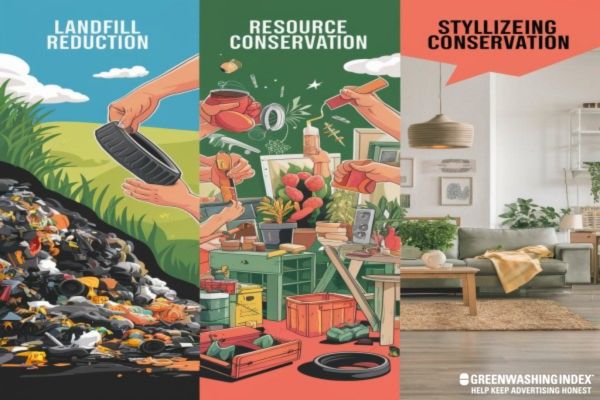
Environmental Impact
Upcycling greatly reduces waste and conserves resources, making it a powerful tool in our efforts to combat environmental degradation. By transforming old or unused items into something new and useful, we can greatly cut down on the amount of waste that ends up in landfills. This practice not only helps to decrease pollution but also lessens the demand for new materials, which often require substantial energy and resources to produce.
Let’s explore how upcycling positively impacts our environment:
- Reduces Landfill Waste: By upcycling, we divert materials from landfills, reducing the space needed for waste disposal and decreasing harmful emissions from decomposing trash.
- Lowers Carbon Footprint: Creating new items from old ones generally requires less energy compared to manufacturing from scratch, leading to fewer greenhouse gas emissions.
- Promotes Sustainable Consumption: Upcycling encourages us to see the value in items we might otherwise discard, fostering a culture of reuse and sustainability.
Resource Conservation
One of the key benefits of upcycling is its ability to greatly conserve valuable resources. When we upcycle, we take old or discarded items and creatively transform them into something new and useful.
This process helps us reduce the need for raw materials. Instead of extracting new resources from the earth, we make use of what we already have. This can substantially cut down on the environmental damage caused by mining, logging, and other extractive activities.
By conserving resources through upcycling, we also reduce the energy consumption that comes with manufacturing new products. Producing new items from raw materials often requires a lot of energy, which usually comes from burning fossil fuels. Upcycling, on the other hand, typically uses much less energy, helping us decrease our carbon footprint.
Additionally, upcycling helps keep items out of landfills. When we repurpose materials instead of throwing them away, we reduce the amount of waste that ends up in landfills, which are already overflowing. This not only conserves space but also reduces the pollution that can come from decomposing waste.
Unique and High-Quality Products
Creating unique and high-quality products is another significant benefit of upcycling. When we upcycle, we take items that might otherwise be discarded and transform them into something new and valuable. This practice results in products that are often one-of-a-kind, reflecting creativity and craftsmanship. Unlike mass-produced items, upcycled goods have a distinct character and story behind them, making them special and unique.
In addition to their uniqueness, upcycled products are often of high quality. Since we’re reusing materials that might’ve originally been durable and well-made, the new items we create can inherit these qualities.
For example, an old wooden door can be converted into a sturdy table, or glass bottles can be crafted into beautiful vases. Because we’re repurposing existing materials, there’s often an opportunity to enhance their durability and functionality.
Might be Helpful: Single-Use Batteries Recycling Guide: Step-by-Step
Upcycling vs Recycling
Let’s look at how upcycling and recycling differ and their roles in the circular economy. While recycling breaks down materials to make new products, upcycling transforms waste into items of higher value without breaking them down. Both methods help reduce waste, but upcycling often requires less energy and preserves the material’s quality.
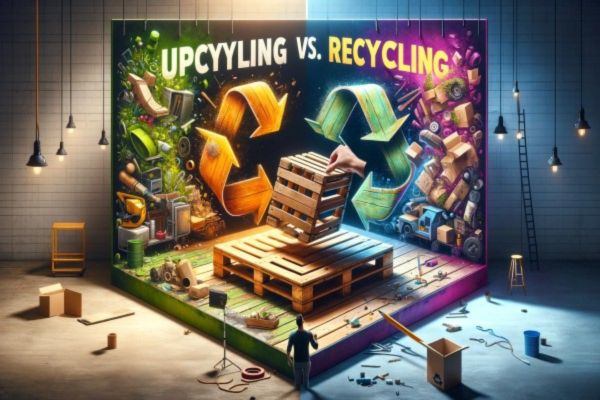
Contrasting Approaches
While both upcycling and recycling aim to reduce waste, they differ substantially in their processes and environmental impacts. When we recycle, we break down items into their raw materials, which are then used to make new products.
This process often requires energy and resources. On the other hand, upcycling involves creatively repurposing old items into something new and useful without breaking them down completely. This method generally uses less energy and results in less pollution.
Let’s look at a quick comparison:
| Aspect | Upcycling | Recycling |
|---|---|---|
| Process | Repurposes items directly | Breaks items down into raw materials |
| Energy Usage | Typically low | Often high |
| Environmental Impact | Minimal pollution, less resource-intensive | Can cause pollution, resource-intensive |
As we can see, upcycling and recycling serve the same goal but achieve it through different means. Upcycling allows us to be creative and resourceful, turning something old into something new and unique.
Recycling, however, is essential for materials that can’t be directly repurposed. Both approaches are vital for a sustainable future, but they complement each other in different ways. Understanding these differences helps us make better choices in our daily lives to protect the environment.
Role in Circular Economy
Recognizing the distinctions between upcycling and recycling helps us understand their unique contributions to the circular economy. Both are essential for reducing waste and conserving resources, but they work in different ways.
Recycling involves breaking down materials to create new products, often requiring significant energy. In contrast, upcycling transforms old items into new, more valuable ones without breaking them down, saving energy and preserving the original material’s integrity.
To better see how each fits into the circular economy, let’s examine three key points:
- Energy Efficiency: Upcycling typically uses less energy than recycling because it doesn’t involve breaking down materials. This makes it a more sustainable option in many cases.
- Value Addition: When we upcycle, we often turn something old into something of higher value. For example, converting an old ladder into a bookshelf adds both utility and aesthetic appeal.
- Resource Conservation: Upcycling helps us make the most of existing resources by giving items a new purpose, and reducing the need for new raw materials.
Statistics on Upcycling
Let’s look at some eye-opening statistics about upcycling. Currently, we’re using 60% more resources than the Earth can provide, which shows how urgent it is to find sustainable solutions. Upcycling helps address this issue by transforming waste into useful products, and reducing the need for new materials.
Global Resource Consumption
We’re consuming resources at an unsustainable rate, but upcycling offers a practical solution to reduce waste and ease our environmental impact. On average, the world is using 60% more resources than our planet can provide. This overconsumption leads to depleted natural resources and increased environmental degradation. By upcycling, we can help mitigate these issues and promote a more sustainable lifestyle.
Consider these eye-opening statistics:
- Waste Generation: Globally, we produce over 2 billion tons of waste each year. Upcycling can notably reduce this number by repurposing materials that would otherwise end up in landfills.
- Carbon Footprint: Traditional manufacturing processes emit large amounts of CO2. Upcycling can lower our carbon footprint because it often requires less energy than producing new items from raw materials.
- Resource Efficiency: Upcycling maximizes the utility of existing resources. For example, turning old textiles into new clothing or furniture keeps materials in use longer, reducing the need for new raw inputs.
Urgency for Sustainable Solutions
As we face mounting environmental challenges, embracing upcycling provides a tangible and immediate way to lessen our ecological footprint. The urgency for sustainable solutions has never been more crucial.
Our planet is currently using 60% more resources than it can regenerate, making it essential for us to adopt practices that reduce waste and conserve resources. Upcycling, which involves transforming waste materials into new, useful products, is one such practice that can make a significant difference.
Let’s consider some eye-opening statistics that underscore the importance of upcycling:
- Waste Reduction: Upcycling can reduce the amount of waste sent to landfills by up to 50%. This means fewer landfills, less pollution, and a healthier planet.
- Resource Conservation: By upcycling, we can conserve natural resources. For example, upcycling one ton of discarded textiles can save up to 20,000 liters of water.
- Economic Impact: Upcycling can boost local economies. Small businesses and artisans can create unique products, generating income and promoting sustainable consumption.
Might be Helpful: TV Recycling: Your Ultimate Guide to Eco-Friendly Disposal
How to Start Upcycling?
Let’s start upcycling by gathering some simple tips for beginners and looking for inspiration. We can begin with small projects, like turning old jars into planters or transforming worn-out clothes into unique fashion pieces.
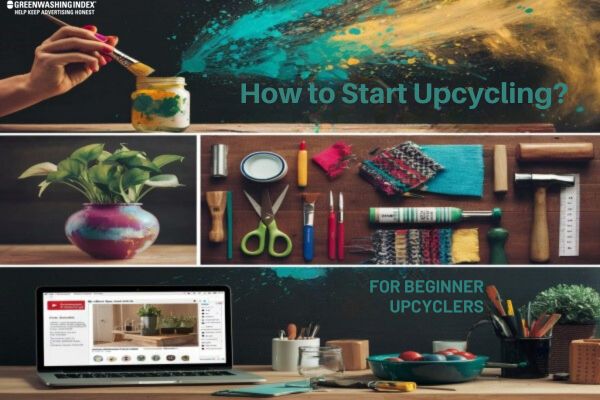
Tips for Beginners
Getting started with upcycling can be both fun and rewarding, especially when you see the transformation of old items into something new and useful. Let’s immerse ourselves in some practical tips to help us begin our upcycling journey.
- Start Small: It’s best to begin with simple projects. Look around our home for items that are easy to work with, like old jars, t-shirts, or furniture. Simple projects can help us build confidence and skills before tackling more complex tasks.
- Gather Supplies: Basic tools and materials are necessary for upcycling. We’ll need items like scissors, glue, paint, and sandpaper. It’s also useful to have a toolkit with screwdrivers, pliers, and a measuring tape. If we don’t have everything, we can borrow or buy them as needed.
- Learn Basic Techniques: Understanding basic techniques can make a big difference. We can look up tutorials online or read books about upcycling. Learning how to sew, paint, or use power tools can open up more possibilities for our projects.
Upcycling Challenges and Solutions
Overcoming obstacles in upcycling can be tough, but it’s not impossible. By working together and sharing ideas, we can find creative solutions to these challenges.
Let’s explore how collaborative efforts can make upcycling more effective and widespread.
Overcoming Obstacles
Despite the evident benefits, we often face several challenges when trying to incorporate upcycling into our daily lives. Understanding these obstacles helps us find solutions and make upcycling a regular habit.
- Time and Effort: Upcycling projects can be time-consuming and require a lot of effort. Finding the right materials and figuring out how to transform them into something useful takes planning and creativity. For many of us, this can be a significant barrier, especially with busy schedules.
- Skill and Knowledge: Not everyone has the skills or knowledge needed to upcycle effectively. It can be intimidating to start a project if we don’t know where to begin or how to use certain tools. However, there are plenty of online tutorials and workshops available to help us learn and improve.
- Space and Storage: Finding space to store materials and work on projects can be a challenge, especially if we live in small apartments or homes. We need to be creative with our storage solutions and perhaps even look for community spaces where we can work on larger projects.
Collaborative Upcycling Efforts
One effective way to tackle the challenges of upcycling is through collaborative efforts that bring together diverse skills and resources. When we work together, we can pool our knowledge, tools, and creativity to overcome many obstacles that might seem insurmountable on our own.
By collaborating, we can address the following key challenges:
- Resource Availability: Sometimes, we don’t have all the materials we need for an upcycling project. By teaming up, we can share or trade resources, ensuring that nothing goes to waste and everyone has what they need to create something new and useful.
- Skill Gaps: Not everyone is an expert in every area. Collaborative efforts allow us to learn from each other, filling in skill gaps that might otherwise hold us back. For instance, someone good at sewing can team up with someone who excels at woodworking to create a unique piece of furniture.
- Innovative Ideas: Brainstorming in groups often leads to more innovative solutions. When we combine our ideas, we can come up with creative ways to upcycle items that we mightn’t have thought of individually.
FAQs
What is an example of upcycling?
Turning an old wooden pallet into a stylish coffee table is a prime example of upcycling. Instead of discarding the pallet, it’s given a new life with added value and functionality.
What is upcycling vs. recycling?
Upcycling repurposes materials directly into new items, preserving their original form. Recycling breaks down materials into their raw components, requiring energy and resource investment. Both methods reduce waste, but upcycling adds value and reduces environmental impact.
Why do we do upcycling?
Upcycling is essential for a sustainable future. It reduces waste by transforming discarded items into valuable products, conserves resources by minimizing the demand for new materials, and encourages creative reuse, fostering a circular economy.
Conclusion
Upcycling allows us to turn waste into valuable resources, benefiting both the environment and our creativity. Unlike recycling, which breaks down materials, upcycling transforms them into something new and useful.
It’s a practical way to reduce waste, conserve resources, and promote sustainability in our daily lives. By embracing upcycling, we can contribute to a healthier planet and inspire innovative thinking. Let’s start upcycling today and make a positive impact on our world!

